Vol. VII, No. 1, January 2007
The death of the mall; welcome to the new landscape of shopping experiences
Shopping centers have continued to evolve over the years, and the latest incarnation is called a lifestyle center. These open air retail areas feature "mixed use" - stores, restaurants, office space, sometimes even apartments or condos.
In last month's Leisure eNewsletter article, The death of entertainment; welcome to the new mindset of leisure experiences, we discussed how entertainment destinations need to change their focus from entertainment only to take a more holistic view of the consumer's entire leisure experience at the venue. This month we are going to discuss the transformation of shopping centers to leisure experience destinations.
For years, most shopping centers and malls thought of themselves as places for consumers to purchase goods -- places that consumers basically had to visit to purchase both the necessities and luxuries of life. That mindset no longer works for many consumers. What we are seeing is a major polarization of the retail industry into two major types of shopping:
- Convenience shopping for necessities
- Experiential or recreational shopping - time we spend enjoying ourselves; a leisure experience
Time pressured consumers are dividing their trips to retail venues into those two categories - either a quick in and out, get it over with type of shopping; or a leisurely, enjoyable visit to a center. Data from research by the International Council of Shopping Centers gives evidence of this. For years, the ICSC has researched shopping in enclosed malls. The chart below shows the shift in the purposes of shopper trips to malls in 1996 vs. 2005.
| Purpose of Visit: | 1996 | 2005 |
|---|---|---|
| General shopping/browsing | 34.3% | 44.1% |
| Specific store/purchase | 49.2% | 33.5% |
In 2005, a larger percentage of mall visits could be described as recreational shopping vs. shopping with a specific purchase in mind.
Pam Danzinger, president of Unity Marketing, cites some of her firm's research in her latest book, Shopping: Why We Love It and How Retailers Can Create the Ultimate Customer Experience. Unity Marketing looked at the total universe of shopping and found that the average person shops for necessities 8.9 times per month and makes 4.4 recreational shopping trips per month.
Unity Marketing's research also found that 79% of women and 59% of men age 25-64 who have incomes of $50,000 or more can be classified as recreational shoppers-people who think of shopping as a form of entertainment and those who enjoy browsing just to see what various stores offer. Recreational shoppers make 4.9 recreational shopping trips per month and spend $409 monthly on those trips, compared to $241 spent by regular shoppers.
While the purpose of trips to shopping centers is shifting, the number of trips is decreasing, according to research by WSL Strategic Retail, an advisor to retailers and manufacturers and publisher of How America Shops reports on U.S. buying habits. The latest research found that 57% of people say they are making fewer trips to shopping centers. That's not at all surprising with today's time pressures and the growing popularity of the Internet's click-to-purchase options.
The North American shopping center retail landscape in is rapidly changing. Malls are losing favor as the place to go. Consumers are now demanding experiential leisure opportunities, not just shopping. There is a shift from material consumption to enjoying experiences. Open-air lifestyle centers are becoming the places to be.
The enclosed mall has been around for 50 years. The world's first climate-controlled enclosed mall was the 95-acre two-level Southdale Center Mall designed by Victor Gruen that opened October 8, 1956, in Edina, Minnesota, near Minneapolis.
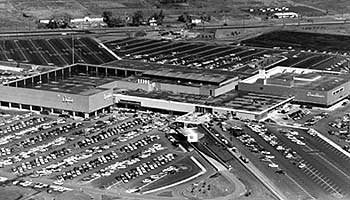
Southdale Center Mall, circa
1956
Last year, according to the ICSC, only one new enclosed mall opened in the U.S. In fact, many more malls were demolished or converted to open-air shopping centers or new uses in 2006. The number of enclosed malls in the U.S. is decreasing.
In 1987, Memphis-based Poag & McEwen opened the The Shops at Turtle Creek in Germantown, Tennessee. The company coined the term lifestyle center to describe open-air shopping centers designed to look more like downtown shopping districts and main streets with what planners call "a mix of uses" - retail, some offices, maybe even some apartments or condominiums and lots of restaurants, entertainment and quasi public spaces. Scores of lifestyle centers are opening throughout the U.S., most within the last two years. In 2002, there were 30 lifestyle centers. In 2006, there were 150, with 100 more in the pipeline.
Although the term lifestyle center didn't exist back then, the first lifestyle center is The Country Club Plaza (often referred to as just The Plaza) developed in what was then the outskirts of Kansas City, Missouri, by developer J.C. Nichols back in 1922. Today, 85 years later, The Plaza is still thriving. (click here for more information on its history)
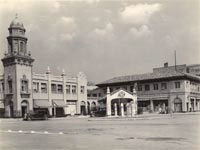

The Country Club Plaza
in 1992 and today.
Why in North America are lifestyle centers the rage with consumers, developers and retailers -- and malls fast losing favor? It gets down to the contemporary basics of shopping and out-of-home leisure, both convenience and experiences. Strip shopping centers offer only convenience. Park in front of the store, go in, make your purchase and leave. Due to their size and layout, malls offer no convenience. Malls have tried to offer more than just shopping with some ambiance, cinemas, food courts, fashion shows, and other special events, but visiting them has still basically amounted to shopping in a large building with a collection of stores.
Lifestyle centers not only offer both convenience, a large selection of shops, restaurants, entertainment venues and a great experience, they do a far better job on the overall experience than malls. "These places are more fun and enticing for consumers," said Terry McEwen of Poag & McEwen. "The idea is to deliver a nurturing atmosphere for people and not just a shopping destination."
In many respects, for contemporary consumers, the shopping experience has evolved to where the goods almost come second to the surroundings. Sara Manuelli, author of Design for Shopping, says, "What was once the marketplace has now evolved into a zone of experience and lifestyle. Pam Danziger of Unity Marketing puts it this way, "Driven by desire, not need, people go shopping for recreation and fun, rather than necessity, which means shoppers want more out of shopping than just buying more stuff. They demand an engaging shopping experience, thus transforming the business of retail in America [and much of the world] today."
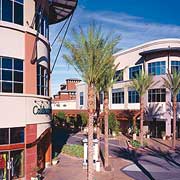
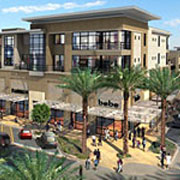
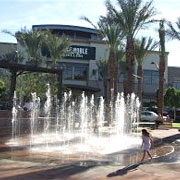
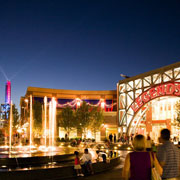
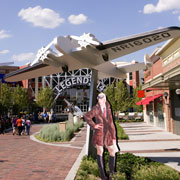
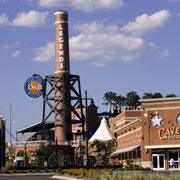
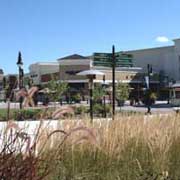
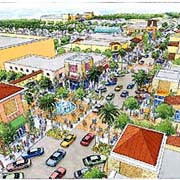
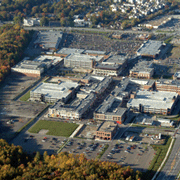
Another way to look at the changing shopping landscape is from the perspective of time and its value to people today. Feeling time-pressured, consumers want to get the most bang for their buck when it comes to spending their time on almost anything. Time has a much greater value to society than it did in the past. For many consumers, their time is more valuable to them than their money. So if we're going shopping, rather than make it a chore, let's make it a fun and enjoyable experience. (See Time is more than money for more about changing attitudes toward leisure time.)
Unlike malls that turn their backs to their locale, lifestyle centers open themselves up to the world. They also recognize that shopping is only one among many types of leisure experiences, so they include dining at restaurants, sitting at restaurant patios, people watching, running through children's spray fountains, playing in dog parks (yes, that's right, a park where dogs can play and poop), attending open air-concerts and just being in the great outdoors. They are great social environments. They also offer something that has been lacking for years in concrete desert strip-shopping centers and the artificial environments of malls - nature, landscaping, trees, bushes, grass and flowers. Lifestyle centers are great gathering spaces. You don't necessarily go there to shop or eat or visit some entertainment venue. You sometimes go because its just a great place "to be." As planners say, lifestyle centers have a "sense of place."
In fact, lifestyle centers are such strong draws, due to their mix of shopping, services, dining, entertainment and environment, they succeed without anchor department stores that enclosed malls depend upon to generate traffic.
"The sense of place created by a lifestyle center, while usually thought of as an attempt to re-create a traditional main street, offers its own distinct - and surprisingly, almost universal flavor," said Jeff Gunning, vice president of the Dallas office of RTKL Architects.
Gary Goddard of Gary Goddard Entertainment puts it this way. "But in away, everything old is new again as retail centers have always, throughout history, been the 'gathering place' for the community. People would go to the marketplace, or the village, to walk, talk, shop and generally enjoy the company of family and friends, and perhaps meet new people, as well. Traditionally, new and 'new products' would be found during those visits. Traveling entertainers could be found, there as well, because, of course, they would go where there were people to perform in front of."
People haven't really changed all that much over time. Downtowns, town squares and main streets were multi-faceted gathering spaces before automobiles and modern highways made possible the boom in suburbia that started in the late 1940s and led to the development of malls anchored by department stores. Then the artificial enclosed mall environment was created to satisfy consumers with their growing disposable income and materialistic appetites. The only problem was that the architects of those warehouses of consumerism forgot about the power of basic human needs. Finally, design is coming full circle with the lifestyle center that pays homage to creating a rewarding setting and experience not only for shopping, but for many leisure activities, including just a great and enjoyable place 'to be.'
No different than entertainment, shopping no longer works as the sole focus for creating destinations. To succeed in today's highly competitive market, out-of-home leisure destinations have to offer the consumer a holistically designed, multifaceted leisure setting and experience that are in tune with consumers' needs and desires.

